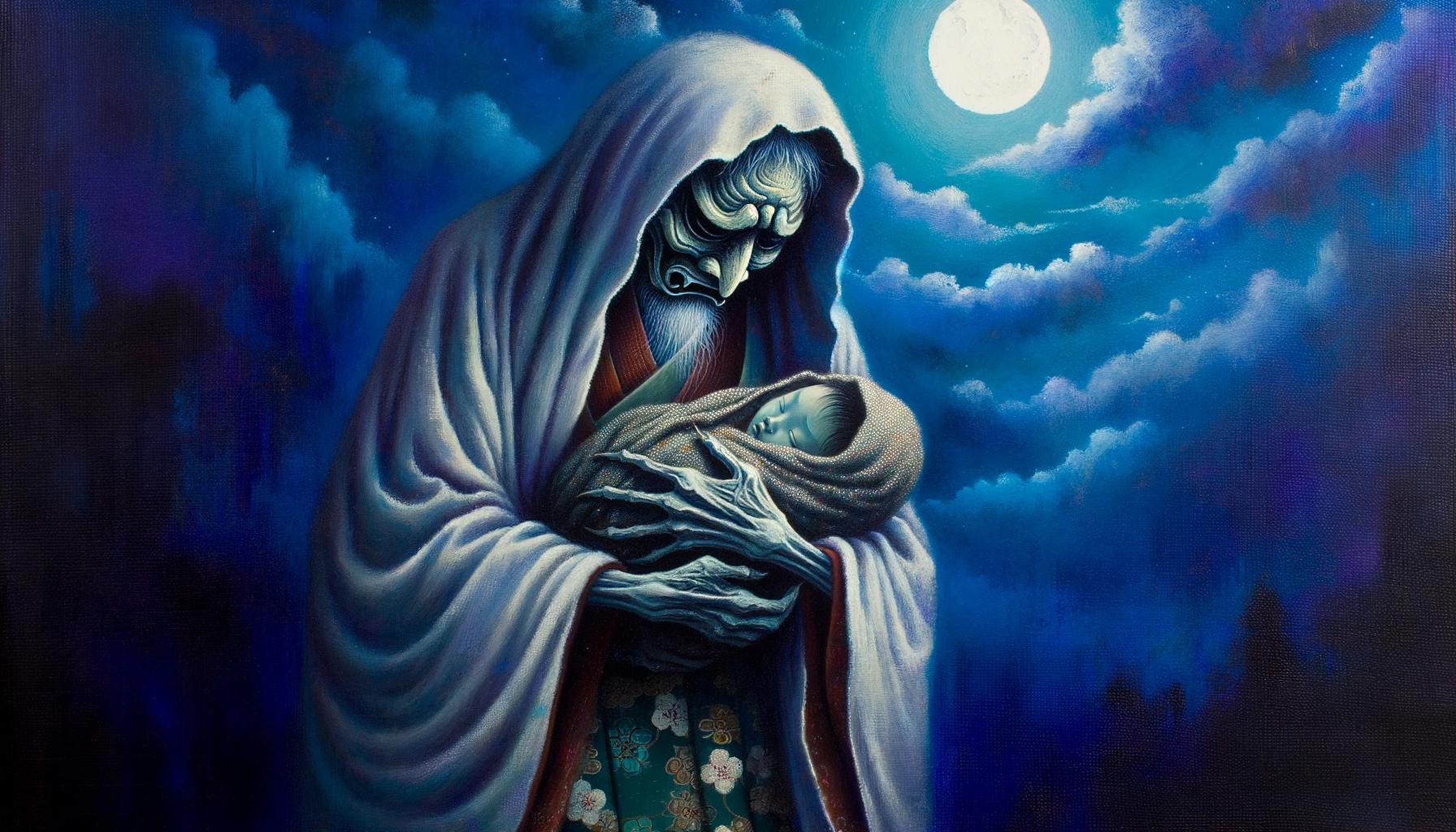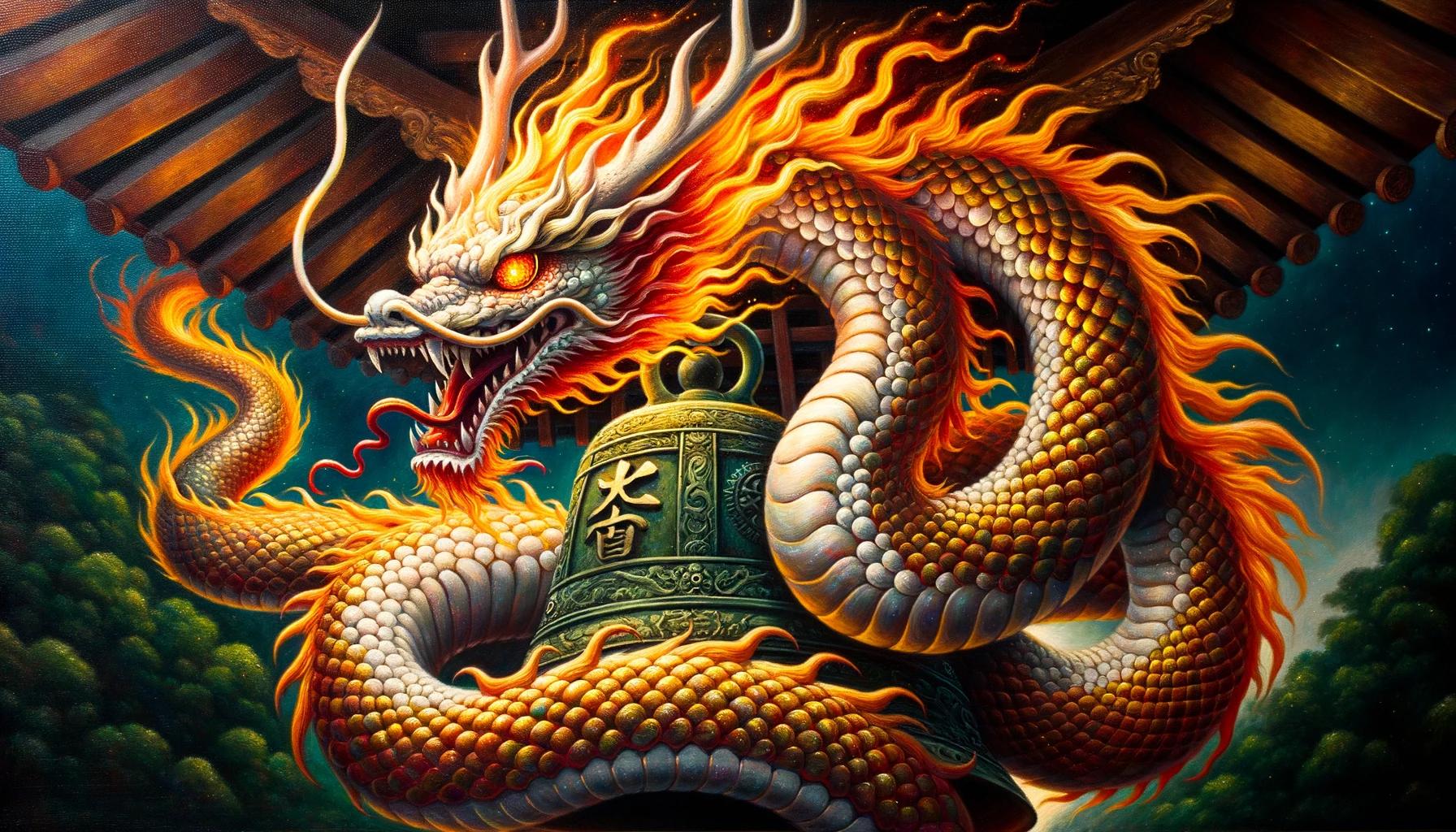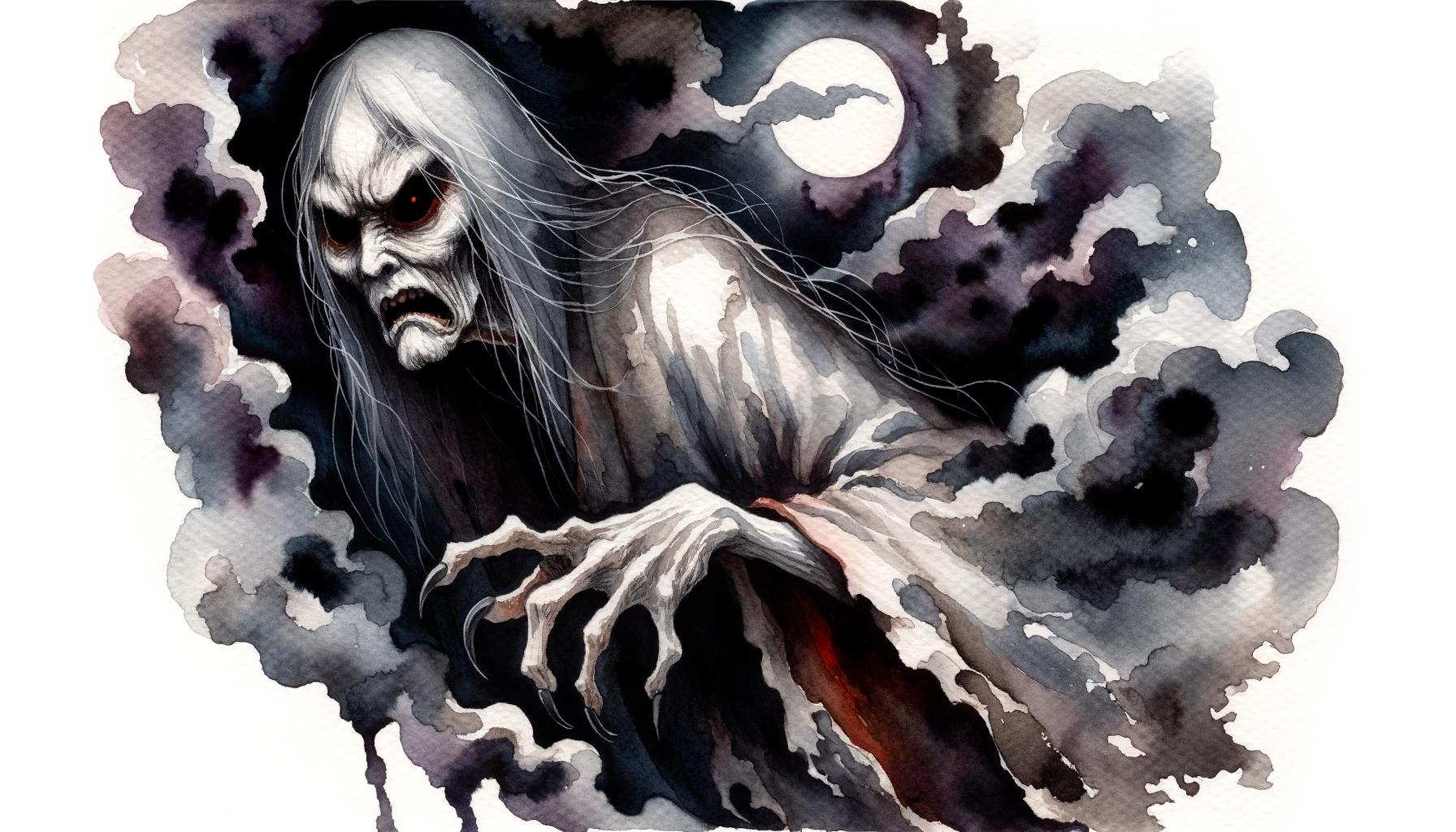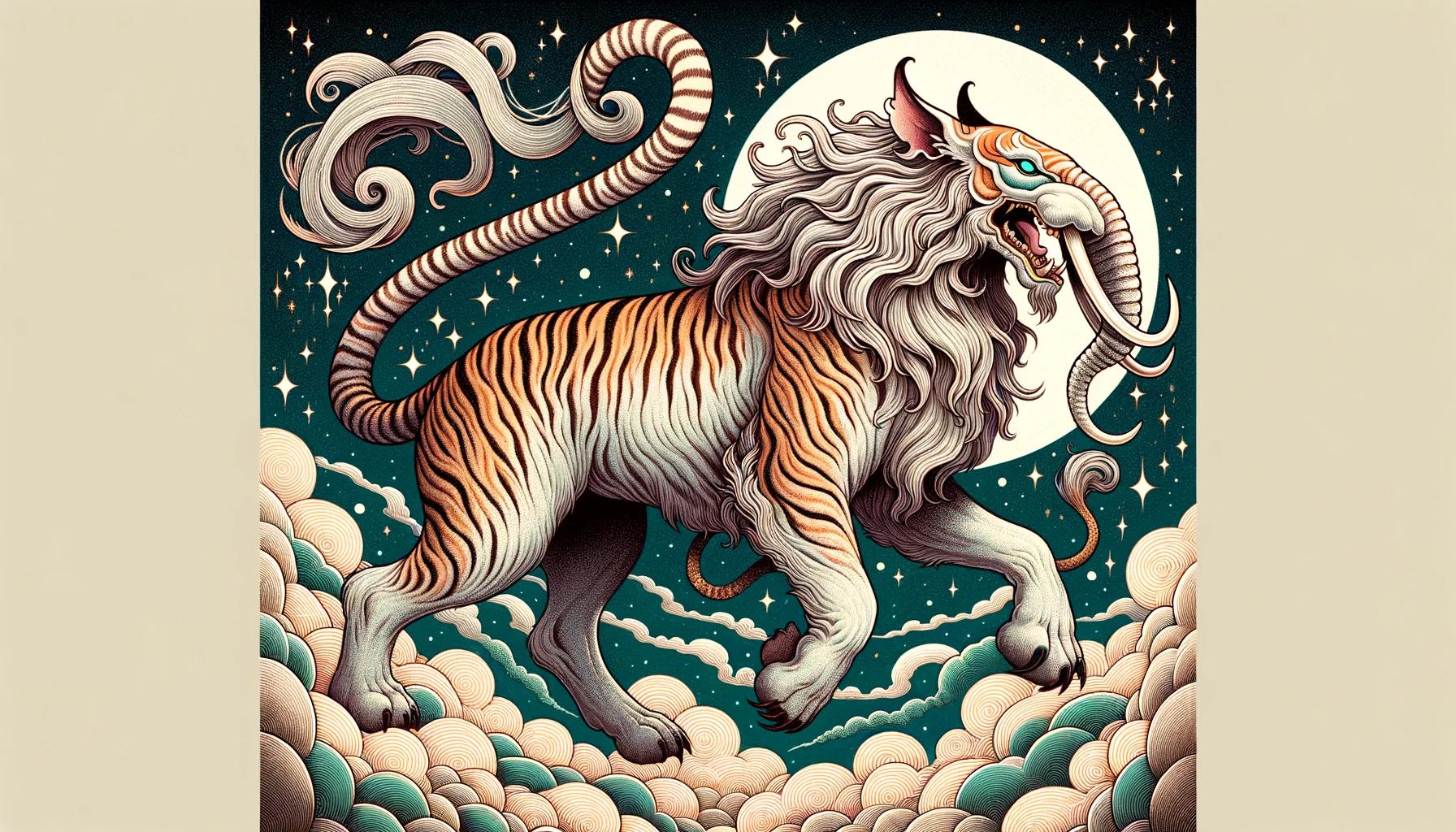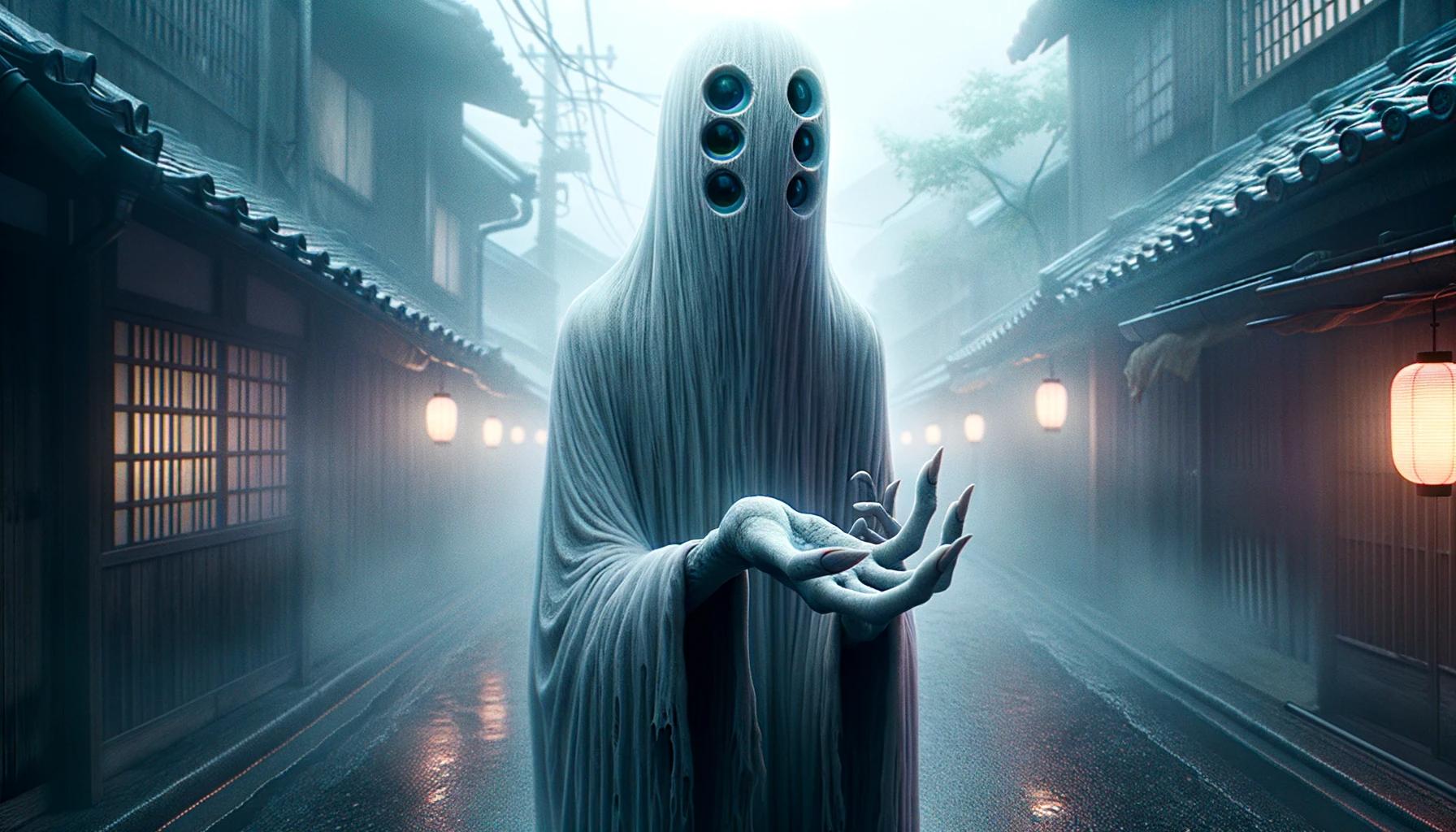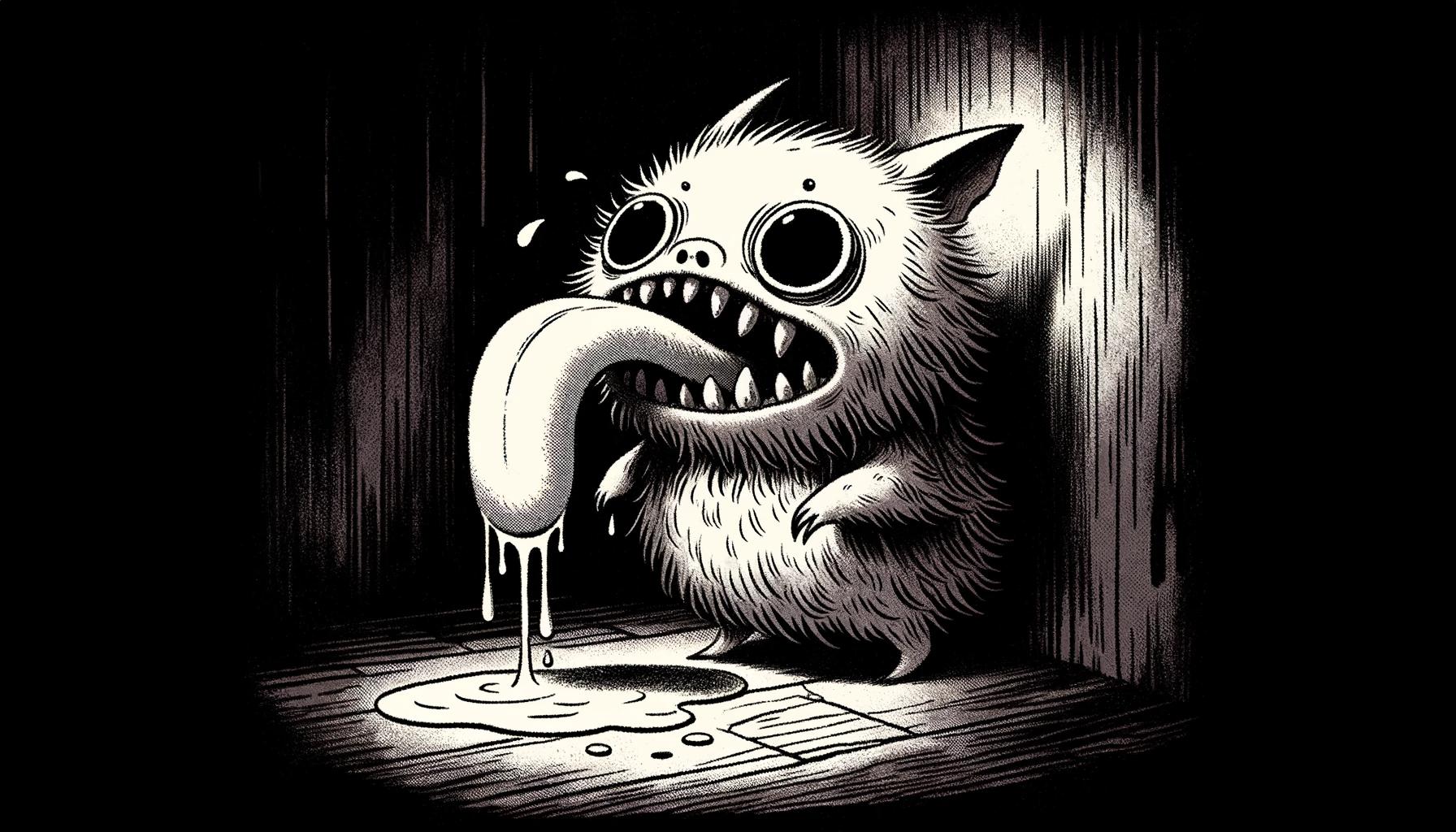Futakuchi Onna Yokai: Unveiling the Terrifying Myths and Lore
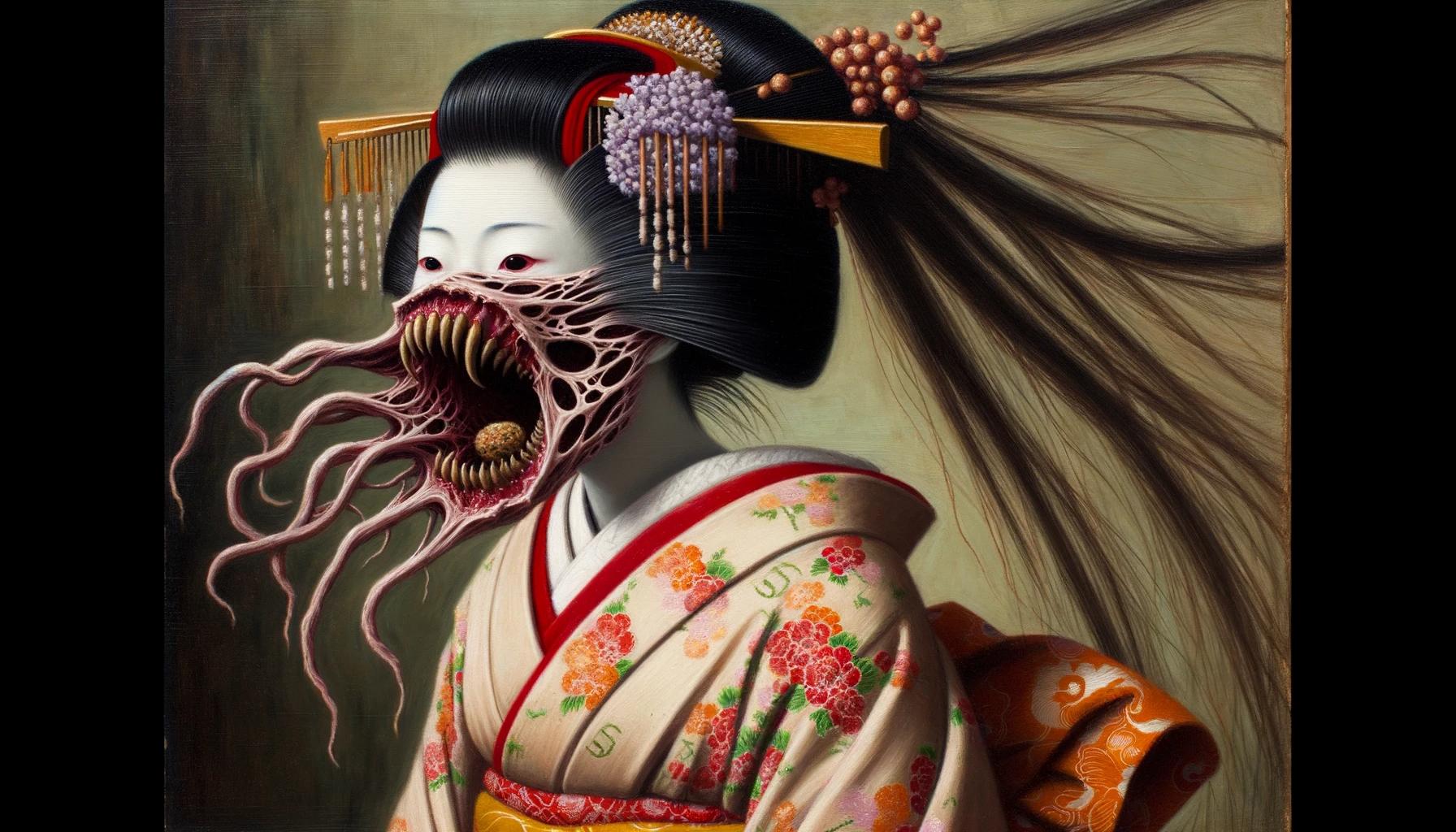
Futakuchi Onna Yokai, a mysterious creature from Japanese folklore, is a woman with a hidden second mouth at the back of her head. This yokai is known for its ability to feed using its long tentacle-like hair, targeting those who are greedy and stingy.
In folklore and art, Futakuchi Onna holds cultural significance, symbolizing themes such as greed and feminine power. Tales and legends explore the consequences faced by those who encounter this eerie yokai.
This article delves into the origins, cultural significance, and tales surrounding Futakuchi Onna, along with its psychological and societal themes. Additionally, it examines modern depictions and connections to other yokai in Japanese folklore.
What is Futakuchi Onna Yokai?
The Futakuchi Onna Yokai is a fascinating and eerie creature deeply entrenched in Japanese folklore and mythology. With her unique physical characteristics and mysterious origins, she captivates both the imagination and the curiosity of those who delve into her tales.
Origins and Mythology of Futakuchi Onna
The exact origins of the Futakuchi Onna Yokai are shrouded in myth and legend. According to one popular belief, she is thought to be an embodiment of a yama uba, an elderly woman transformed into a young girl.
Others believe that she is a magical spider, known as a kumo, capable of shape-shifting to deceive others. Yet another theory suggests that she arises from curses brought upon by wicked actions, similar to the rokuro kubi.
Regardless of the origin story, Futakuchi Onna is consistently portrayed as a punishment for greedy and stingy individuals.
Physical Characteristics and Abilities
The most notable physical feature of the Futakuchi Onna Yokai is her second mouth, hidden on the back of her head. This mouth is surrounded by large lips and teeth, and her long, tentacle-like hair acts as her feeding mechanism.
With her hair, she can manipulate objects and feed herself, emitting eerie pleasure-filled sounds as she consumes her meals. It is said that this second mouth requires no sustenance of its own and sustains itself by devouring the food meant for the host.
This fascinating and grotesque trait adds to the allure and horror surrounding the Futakuchi Onna Yokai.
Cultural Significance of Futakuchi Onna Yokai
The Futakuchi Onna Yokai holds a significant place in Japanese folklore and art. She has become an iconic symbol, representing various themes and interpretations within Japanese culture. From her appearance to her actions, Futakuchi Onna serves as a powerful metaphor for societal and psychological concepts.
Futakuchi Onna in Japanese Folklore and Art
In Japanese folklore, Futakuchi Onna is featured in numerous tales and legends, capturing the imagination of the people. Artists throughout history have depicted her in various forms, showcasing her unique characteristics and hidden second mouth.
These artistic representations have allowed her to become a recognizable figure in Japanese culture. From traditional woodblock prints to contemporary manga and anime, artists have explored and reimagined her story, contributing to her enduring popularity.
Symbolism and Interpretations of Futakuchi Onna
The symbolism behind Futakuchi Onna holds deep cultural significance. She embodies themes such as greed, gluttony, and punishment. Her second mouth represents hidden desires, unfulfilled appetites, and the consequences of excessive consumption.
Futakuchi Onna serves as a cautionary figure, teaching valuable lessons about the dangers of hoarding and selfishness.
Moreover, Futakuchi Onna resonates as a symbol of feminine power and identity. She challenges traditional gender roles, defying societal expectations.
Her ability to consume without limitation parallels the idea of women breaking free from perceived constraints and finding autonomy. Futakuchi Onna’s presence invites exploration of the complexities and strengths of female characters in Japanese folklore.
In addition, Futakuchi Onna is often associated with themes of transformation and hidden truths. Her seemingly ordinary appearance hides the existence of her second mouth, reflecting the idea that what is seen on the surface may not always reveal the complete truth.
This aspect of her character delves into the duality of human nature and the capacity for unexpected revelations.
Futakuchi Onna’s symbolism extends beyond individual stories, reflecting broader cultural narratives and values within Japanese society.
As such, she remains an intriguing and captivating figure, inviting further exploration and interpretation.
Tales and Legends of Futakuchi Onna Yokai
Discover the fascinating tales and legends surrounding the enigmatic Futakuchi Onna Yokai. These stories have captivated the imagination of generations, shedding light on the consequences faced by those who encounter this mysterious creature.
The Miser and his Second-Mouthed Wife
One famous story tells the tale of a miserly man living in a small rural village in Fukushima. Consumed by his greed, he sought a wife who wouldn’t require him to spend money on food.
He thought he found the perfect match in a woman who never seemed to eat anything.
However, as their rice supplies dwindled mysteriously, curiosity overcame the miser. He decided to spy on his wife when she thought he was away at work.
To his horror, he witnessed her unraveling her hair, revealing a second mouth on the back of her head. Using her hair tentacles, she voraciously consumed the food, emitting sounds of pleasure.
Filled with terror, the miser decided to divorce his wife, but she discovered his intentions and chased him into the mountains. Fortunately, he managed to hide in a swamp where the Futakuchi Onna couldn’t find him.
The Cruel Stepmother and the Haunting
In another chilling tale, a wicked stepmother purposely deprived her stepdaughter of food while lavishing her own daughter with abundance. Eventually, the neglected stepdaughter weakened and succumbed to starvation. However, forty-nine days after her death, the stepmother began experiencing excruciating headaches.
To her shock, a second mouth with lips, teeth, and a tongue emerged from the back of her head. The voice that emanated while eating spoke in the deceased stepdaughter’s voice, haunting the stepmother forever.
Other Stories and Variations of Futakuchi Onna
Beyond these well-known tales, there are other variations of the Futakuchi Onna legends. One account briefly mentions a man named Atsuya who falls for a beautiful and intelligent woman named Futakuchi Onna.
He initially appreciates her moderate eating habits, as he prefers slender women and desires to save money.
However, Atsuya soon discovers his food supplies depleting rapidly and uncovers his wife’s nightly thefts from the pantry.
The outcome of this particular story remains unknown, as the text does not provide further details.
These tales of the Futakuchi Onna Yokai serve as cautionary reminders against greed and stinginess.
Through their horrifying and captivating narratives, they explore themes of punishment, gluttony, feminine power, and the complexities of human nature.
Psychological and Societal Themes in Futakuchi Onna Folklore
The fascinating folklore surrounding Futakuchi Onna Yokai delves into various psychological and societal themes that reflect the cultural context in which these tales originated. This section explores two prominent themes associated with Futakuchi Onna: Greed, Gluttony, and the Punishment of Hoarding, as well as Feminine Power and Identity in Futakuchi Onna folklore.
Greed, Gluttony, and the Punishment of Hoarding
Futakuchi Onna serves as a cautionary tale against the vices of greed and gluttony. The creature’s ability to consume large amounts of food using her hidden second mouth highlights the consequences of excessive desires and indulgence.
By feasting upon the resources and provisions of those who hoard and display selfishness, Futakuchi Onna becomes the manifestation of punishment for such behavior.
This theme emphasizes the importance of moderation, generosity, and the recognition of the true value of resources.
The tales of Futakuchi Onna convey a moral lesson that warns against the harmful effects of greed, exposing the pitfall of accumulating wealth and possessions without considering the needs of others.
Feminine Power and Identity in Futakuchi Onna
Another intriguing aspect of Futakuchi Onna folklore is the exploration of feminine power and identity. The second mouth hidden within the creature’s hair is often depicted as a symbol of suppressed female energy and repressed desires.
Futakuchi Onna challenges societal expectations and norms, offering a unique representation of the power and strength possessed by women.
These tales serve as a reminder that women should not be underestimated or dismissed based on appearances.
Futakuchi Onna’s ability to assert herself and assert her desires through her second mouth symbolizes a reclamation of power and agency. The yokai represents the untapped potential and resilience of women, showcasing the significance of embracing one’s true identity and breaking free from societal constraints.
In conclusion, psychological and societal themes permeate the folklore of Futakuchi Onna Yokai. Through cautionary tales of greed, gluttony, and the punishment of hoarding, as well as the exploration of feminine power and identity, these stories provide insights into the cultural mindset and values of the society in which these legends originated.
Modern Depictions and Popularity of Futakuchi Onna
In recent times, the mysterious and fascinating Yokai known as Futakuchi Onna has gained significant attention in contemporary literature, media, and popular culture. Its unique characteristics and intriguing tales have captured the imagination of many, leading to various depictions in different forms of artistic expression.
Futakuchi Onna in Contemporary Literature and Media
The captivating presence and eerie nature of Futakuchi Onna have found their way into numerous literary works and media adaptations. Writers and filmmakers have embraced the mystique of this mythical being, incorporating it into their storytelling to create chilling and suspenseful narratives.
Modern novels often explore the psychological impact of encountering Futakuchi Onna, delving into themes of guilt, fear, and the consequences of greed. By weaving this monstrous Yokai into their plots, authors have successfully engrossed readers in thrilling tales that blur the line between reality and the supernatural.
Furthermore, the influence of Futakuchi Onna can be seen in various Japanese manga and anime. These visual mediums have provided a platform for artists and animators to bring the Yokai to life, captivating audiences with their imaginative and detailed portrayals.
In these modern adaptations, the multifaceted nature of Futakuchi Onna is often explored, presenting her as a complex character with her own desires and motivations.
Influence on Popular Culture and Artistic Representations
Beyond literature and media, the allure of Futakuchi Onna has permeated popular culture and artistic spheres.
Artists and illustrators have drawn inspiration from this mysterious creature, creating visually stunning and evocative representations in various art forms.
Intricate paintings, sculptures, and digital artwork showcase the distinctive physical features of Futakuchi Onna, capturing her dual-mouthed visage and entwined hair tentacles.
These mesmerizing artistic interpretations provide a visual feast for viewers and invoke a sense of awe and curiosity.
Additionally, Futakuchi Onna has become a popular subject in cosplay and costume design.
Enthusiasts immerse themselves in the world of this supernatural Yokai, meticulously recreating its unique appearance as a form of self-expression and admiration for Japanese folklore.
- Contemporary literature and media have embraced the enigma of Futakuchi Onna, incorporating it into suspenseful narratives that explore psychological themes.
- Japanese manga and anime have brought Futakuchi Onna to life through visually captivating adaptations that delve into her multifaceted nature.
- The influence of Futakuchi Onna can be seen in popular culture, where artists create stunning representations in various art forms, such as paintings and sculptures.
- Cosplay enthusiasts have taken inspiration from Futakuchi Onna, showcasing their creativity in the form of detailed and intricate costumes.
The enduring popularity of Futakuchi Onna in contemporary literature, media, and artistic expressions serves as a testament to the enduring appeal of this captivating Yokai and its ability to continue fascinating and enthralling audiences in the modern era.
Exploring Similar Yokai and Folklore Creatures
The rich tapestry of Japanese folklore is teeming with a diverse array of fascinating yokai and mythical creatures. In this section, we delve into the realm of yokai that share connections or similarities with the enigmatic Futakuchi Onna Yokai. These entities exist within a complex web of folklore and legends, each with their own unique characteristics and narratives.
The Connection between Futakuchi Onna and other Yokai
While Futakuchi Onna stands out with her distinct physical feature of a secondary mouth, there are other yokai that share similar elements or themes. One such example is the Rokurokubi, a creature with an extendable neck that is capable of unhinging its head from its body.
The Rokurokubi shares commonalities with Futakuchi Onna as both are often portrayed as a form of punishment to individuals with undesirable behaviors, such as greed and stinginess.
Additionally, the Nukekubi is another yokai that bears resemblance to Futakuchi Onna.
Nukekubi are creatures that appear as ordinary humans during the day but undergo a horrifying transformation at night as their heads detach from their bodies and float around in search of prey.
This shared theme of transformation and hidden features connects the Nukekubi and the Futakuchi Onna in intriguing ways.
Notable Yokai of Japanese Folklore
Beyond the connection to other yokai, Japanese folklore boasts a multitude of captivating mythical creatures. Here are a few notable examples:
Kappa:
- Aquatic creatures resembling humanoid turtles, known for their love of mischief and their fondness for cucumbers.
- Kappa are often depicted as having a hollow indentation on their heads filled with water, which gives them their strength.
- Some tales portray them as mischievous tricksters, while others present them as malevolent beings that prey on humans.
Yuki-onna:
- A beautiful, ghostly woman associated with winter and snow.
- Yuki-onna is often depicted as a vengeful spirit or a seductive being who lures unsuspecting men to their demise in the snowy landscapes.
- Her icy touch can freeze victims solid, leaving them as lifeless statues in the wintry landscape.
Tengu:
- A fascinating and complex creature often depicted as a bird or crow-like humanoid with a long nose and wings.
- Tengu are known for their mastery of martial arts, supernatural abilities, and association with mountains and forests.
- They are sometimes portrayed as protectors of Buddhism or mischievous troublemakers, capable of both good and evil deeds.
These are just a few examples of the diverse range of yokai found within Japanese folklore.
Each has its own distinct lore, characteristics, and intriguing narratives that contribute to the rich tapestry of mythical creatures in Japanese culture.
As we continue our exploration of yokai and folklore, we are transported into a realm where imagination and tradition intertwine, offering endless tales and legends to captivate the senses and ignite the curiosity of those who delve into the mystical world of Japanese folklore.
Frequently Asked Questions (FAQs) about Futakuchi Onna Yokai
How did Futakuchi Onna attain her second mouth?
The origin of Futakuchi Onna’s second mouth varies in different folklore accounts. According to some tales, it is believed that Futakuchi Onna’s second mouth is a result of a curse or a supernatural transformation.
In one version, it is said that her second mouth manifests as a punishment for her greed and gluttony. It is important to note that the exact reason behind the appearance of the second mouth may differ depending on the specific story or interpretation.
What is the significance of Futakuchi Onna’s tentacle-like hair?
Futakuchi Onna’s tentacle-like hair serves as a unique characteristic of this yokai. It is believed that her hair transforms into appendages similar to tentacles that she uses to feed herself using her hidden second mouth.
This feature adds to the eerie and unsettling nature of Futakuchi Onna, as her hair appears to come alive and function as a means for obtaining sustenance without being detected easily.
The tentacle-like hair is often depicted as long and can extend to reach food or objects.
Are there any real-life inspirations for the myth of Futakuchi Onna?
The myth of Futakuchi Onna is primarily a product of Japanese folklore and mythology.
While it is based on ancient beliefs and oral traditions, there is no direct evidence of real-life occurrences inspiring the specific details of Futakuchi Onna’s legend. It is important to remember that folklore and mythical creatures often serve as allegorical representations or cautionary tales rather than having direct real-world origins.
How does Futakuchi Onna punish greedy and stingy individuals?
Futakuchi Onna is often depicted as a supernatural punishment for individuals who exhibit greed and stinginess. In various tales, she preys upon those who hoard food, consuming it with her hidden second mouth.
Her appearance and the consequences she inflicts serve as a reminder of the repercussions of selfishness and the importance of generosity. By tormenting and feeding on the selfish individuals, Futakuchi Onna embodies a karmic justice, teaching lessons about the consequences of one’s actions.
Is there a moral lesson behind the tales of Futakuchi Onna?
Yes, the tales of Futakuchi Onna often carry moral lessons. They serve as cautionary tales, warning against the vices of greed, gluttony, and avarice. Futakuchi Onna’s appearance and actions expose the negative consequences of selfishness and the importance of being compassionate and sharing.
These tales remind individuals to appreciate the value of generosity, empathy, and the dangers of excessive materialism. The moral lesson varies slightly across different versions of the stories, but the underlying theme of karma and the effects of one’s actions remain consistent.
Exploring Other Intriguing Yokai in Japanese Folklore
Overview of Various Yokai and their Characteristics
Japanese folklore is rich with fascinating creatures known as yokai. These supernatural beings come in various forms, each with their own unique characteristics and traits. Here is an overview of some of the most intriguing yokai found in Japanese folklore:
- Kappa: Aquatic creatures resembling turtles with a bowl-like indentation on their heads.
Known for their mischievous nature and love for cucumber.
- Tengu: Bird-like creatures with long noses and wings. Often depicted as guardians of the mountains and possessors of great wisdom.
- Kitsune: Shapeshifting foxes with the ability to assume human form.
They are often portrayed as mischievous tricksters or wise spirits.
- Yuki-onna: Snow women who appear during winter storms. They are known for their ethereal beauty and their ability to freeze their victims with a single touch.
- Nekomata: Supernatural cats with the power to manipulate the dead.
They are often associated with bad luck and are said to possess magical powers.
Yokai Tales and Legends from Different Regions of Japan
Throughout Japan, each region has its own unique folklore and legends surrounding yokai. These tales often reflect the local culture, geography, and historical events. Here are a few notable yokai and their associated stories from different regions:
Hakutaku (Kansai region)
The Hakutaku is a wise and benevolent yokai with the appearance of a tiger with nine eyes on its forehead.
It is said to bring good fortune and knowledge to those who encounter it.
Rokurokubi (Kyushu region)
The Rokurokubi are supernatural beings with the ability to stretch their necks to extraordinary lengths. They often appear as ordinary humans during the day and reveal their true form at night.
Satori (Tohoku region)
The Satori is a creature with the ability to read minds. It is known to harm those who try to deceive or hide their intentions. The Satori is often portrayed as a monkey-like creature with piercing eyes.
Kijimuna (Okinawa region)
The Kijimuna are mischievous tree spirits native to Okinawa. They are often depicted as child-like creatures with red hair and have the ability to bring good luck or cause trouble to those who wander into their territory.
These are just a few examples of the diverse range of yokai found across Japan. Each region has its own unique interpretation and tales of these supernatural beings, adding to the rich tapestry of Japanese folklore.
.












